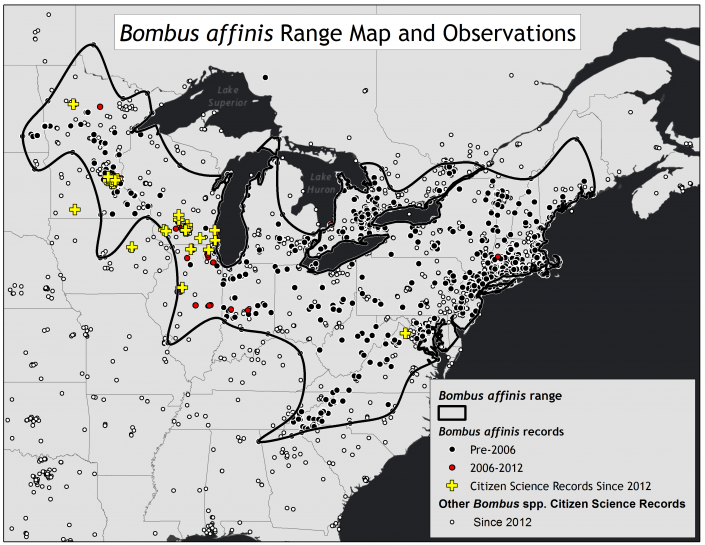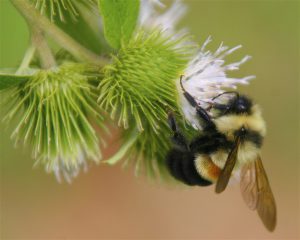New Jersey Gains Another Endangered Species: The Rusty Patched Bumble Bee
First bee in continental U.S. added to endangered list
By Kendall Miller
The rusty patched bumble bee has been locally extinct from the Garden State since the late 1900s. Once a common sight, the species has been eliminated from 87% of its entire range and has been seen only in isolated pockets of its once wide range.
But finally, the long awaited day has come – the rusty patched bumble bee has officially been added to the Endangered Species List.

The Xerces Society for Invertebrate Conservation first petitioned for the listing of the rusty patch in 2013. The decision to list was finally reached in September of this past year, and the Rule was officially published on January 11, 2017. The official Ruling brings the species under the protection of the Endangered Species Act, which will enable it to receive much needed federal protection.
Following the listing of seven yellow-faced bees found only in the isolated archipelago of Hawaii this September, the rusty patched is the first bee to join the ESL that is native to the continental U.S. It seems as if it has not been a good couple of months for bees, however this perception is far from the truth. Pollinators are on the decline across the globe as a result of pesticides, habitat loss and degradation, and the spread of pests and diseases. Listing pollinators for the first time means that their plight is recognized, and it empowers those who are working to protect these species from extinction.

The multitude of ways that we rely on pollinators – for food, clothes, ecosystem functioning – means that their peril is our own. In New Jersey, the service provided by *wild pollinators is valued at $43 million; in the U.S. as a whole, it is $3 billion annually. Since the rusty patch (along with other species of bumble bees) is an excellent pollinator of New Jersey crops like blueberries, cranberries, and tomatoes, it is sorely missed from the Garden State.
This listing is another small step for the protection of native bees and pollinators everywhere.
Helping pollinators takes three steps:
1. Plant flowering nectar sources spring through fall
2. Provide safe nesting and overwintering habitat
3. A pesticide free environment
*Wild pollinators are native bee species like the rusty patch bumble bee that have evolved with their native ecosystems. Honey bees that are commercially used for agriculture pollination services and honey production are not native to the United States.
Kendall Miller is a project coordinator for Conserve Wildlife Foundation of New Jersey.
Discover more from Conserve Wildlife Foundation of NJ
Subscribe to get the latest posts sent to your email.